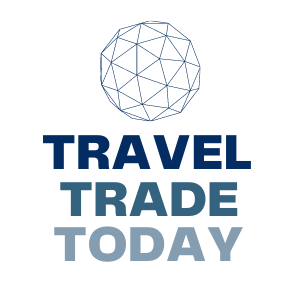Top Takeaways
- Business travel demand is expected to be healthy, with conservative estimates of 1-2 points of sequential volume growth in future quarters.
- Sabre has doubled the number of airlines distributing New Distribution Capability content through its marketplace.
- Sabre has completed the majority of a $100 million cost reduction for this year, including a workforce reduction of about 15%.
- Sabre reported a net loss of $129 million in Q2, an improvement over the previous year, primarily due to a restructuring charge related to the workforce reduction.
Total bookings through Sabre’s global distribution system increased 12% year over year in Q2 to $90 million. Sabre hopes for “solid” industry growth in the coming quarters, citing rising aircraft deliveries, supply constraints mitigation, and a healthy yield environment. Sabre’s distribution revenue increased 23% year over year in Q2 to $530 million, driven by an increase in bookings and a favorable shift in booking mix. Sabre’s Hospitality Solutions revenue increased 16% year over year in Q2 to $77 million, driven by an increase in central reservation system transactions and a higher rate per transaction.
Total bookings through Sabre’s global distribution system increased 12 per cent year over year in the second quarter to $90 million, and the travel technology company said on Thursday it hopes for “solid” industry growth in the coming quarters.
Sabre president and CEO Kurt Ekert in an earnings call said reasons for optimism in growing flight volumes include “rising aircraft deliveries to global carriers, further mitigation of supply constraints from labour and training shortfalls and a healthy yield environment and load factors.”
Business travel demand in particular is expected to be “healthy,” though Sabre has conservative estimates of about 1 to 2 points of sequential volume growth in future quarters, he said.
Sabre’s distribution revenue increased 23 per cent year over year in the second quarter to $530 million, due not only to the increase in bookings but also “a favourable shift” in booking mix, According to an article in Sabre. The average booking fee was up 10 per cent year over year to $5.87.
Over the first half of this year, Sabre has doubled the number of airlines distributing New Distribution Capability content through the Sabre marketplace, including the additions of United Airlines, Virgin Atlantic and Air Canada, Ekert said.
Sabre also signed a “significant number of agreements” with agencies during the second quarter, including a new long-term commitment with Internova, Ekert said.
Sabre’s Hospitality Solutions revenue increased 16 per cent year over year to $77 million in the second quarter. The increase was driven by an 8 per cent increase in central reservation system transactions as well as a higher rate per transaction, According to an article in Sabre.
Ekert also said Sabre has completed “the vast majority” of a $100 million cost reduction for this year that Sabre announced last quarter, which included a workforce reduction of about 15 per cent.
Sabre reported a net loss of $129 million in the second quarter, an improvement over a $193 million net loss in the second quarter of 2022. A $59 million restructuring charge related to the workforce reduction contributed to the loss.
According to an article in Business Travel News Europe, Sabre’s global distribution system experienced a 12 per cent increase in total bookings in the second quarter, reaching $90 million. This growth has led the travel technology company to express optimism about the industry’s future, anticipating “solid” growth in the coming quarters.
During an earnings call, Sabre’s president and CEO, Kurt Ekert, highlighted several factors contributing to the positive outlook for flight volumes. These include the increasing delivery of aircraft to global carriers, the mitigation of supply constraints arising from labor and training shortages, and a favorable yield environment and load factors.
While business travel demand is expected to be “healthy,” Sabre remains conservative in its estimates, projecting 1 to 2 points of sequential volume growth in future quarters.
The significant increase in Sabre’s distribution revenue, which rose by 23 per cent to $530 million in the second quarter, can be attributed to both the rise in bookings and a favorable shift in booking mix. Additionally, the average booking fee increased by 10 per cent to $5.87 year over year.
Sabre has been actively expanding its airline partnerships, with the number of airlines distributing New Distribution Capability content through the Sabre marketplace doubling in the first half of the year. This includes notable additions such as United Airlines, Virgin Atlantic, and Air Canada.
The company also secured numerous agreements with agencies during the second quarter, including a new long-term commitment with Internova.
In the Hospitality Solutions segment, Sabre experienced a 16 per cent increase in revenue to $77 million in the second quarter. This growth was driven by an 8 per cent increase in central reservation system transactions and a higher rate per transaction.
Sabre has made significant progress in its cost reduction efforts, having completed the majority of a $100 million reduction plan announced last quarter. This plan included a 15 per cent reduction in the workforce.
Despite these positive developments, Sabre reported a net loss of $129 million in the second quarter. However, this represents an improvement compared to the $193 million net loss in the same quarter of the previous year. The loss was partly attributed to a $59 million restructuring charge associated with the workforce reduction.
To culminate, Sabre’s second-quarter results demonstrate strong growth in total bookings and distribution revenue. The company’s focus on expanding partnerships and reducing costs positions it well for future growth in the travel industry. With a positive outlook for flight volumes and a healthy business travel demand, Sabre remains optimistic about the industry’s prospects in the coming quarters.





